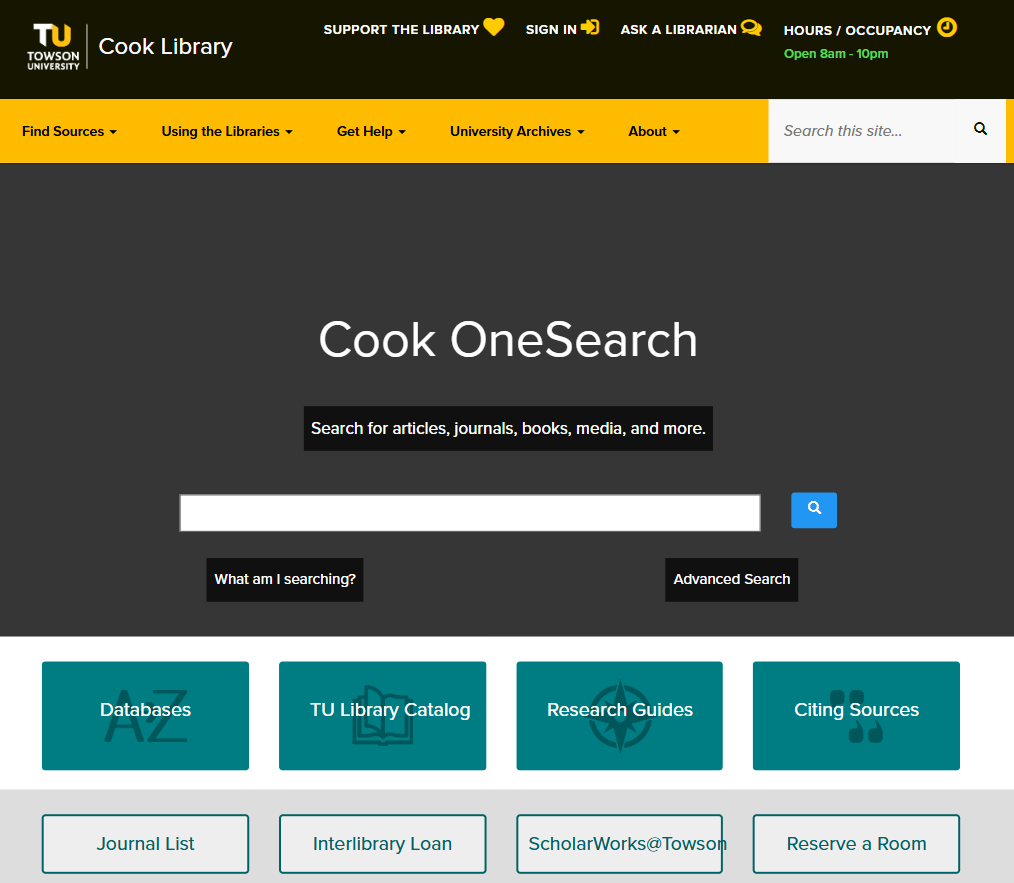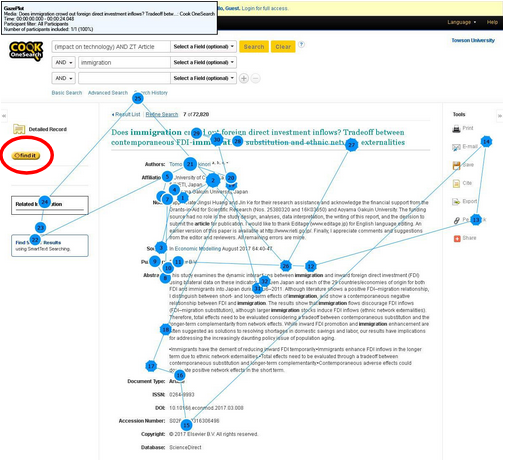Towson University library discovery tools
A usability study of Towson University’s “Cook OneSearch” online library search tool
tl;dr
As part of my Master’s program for Interaction Design and Information Architecture at the University of Baltimore, my partner and I conducted a usability study with Towson University undergraduates to test the effectiveness of their school’s online library search tool, “OneSearch.”
Methodology
After discussing goals for the library search system with Towson library staff, we conducted four moderated usability sessions with undergraduates. Participants were given seven tasks to complete using the online search tool (e.g. find where in the library a physical book is located, find a peer-reviewed article from the past two years on a particular subject, etc.). We observed how they performed these tasks and whether they were successful in completing them. We recorded the participant’s screens, their faces for visual cues, and ran Tobii eye-tracking software to observe where participants looked for useful information.
Analysis and findings
Our usability sessions were able to uncover multiple areas that caused a poor user experience. Technical problems with the login feature caused participants to get stuck in a loop. Poor screen layouts rendered certain features and tools practically invisible, as illustrated with eye tracking heat maps and gaze plots. Reliance on search methodologies like boolean operators were not intuitive to a younger generation used to Google searches.
Because of our research, the Cook Library department was able to implement some easy wins, such as changing the page layout to account for middle screen bias.



